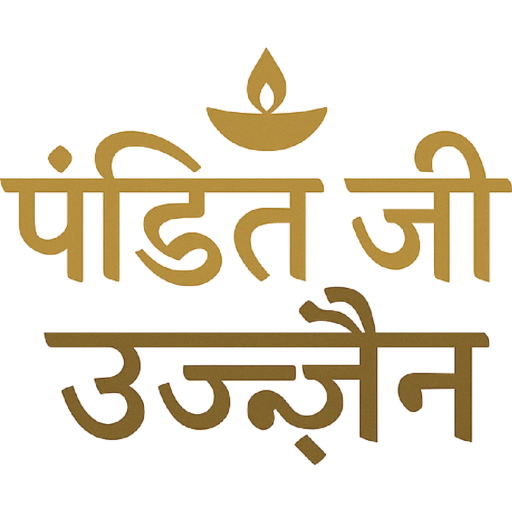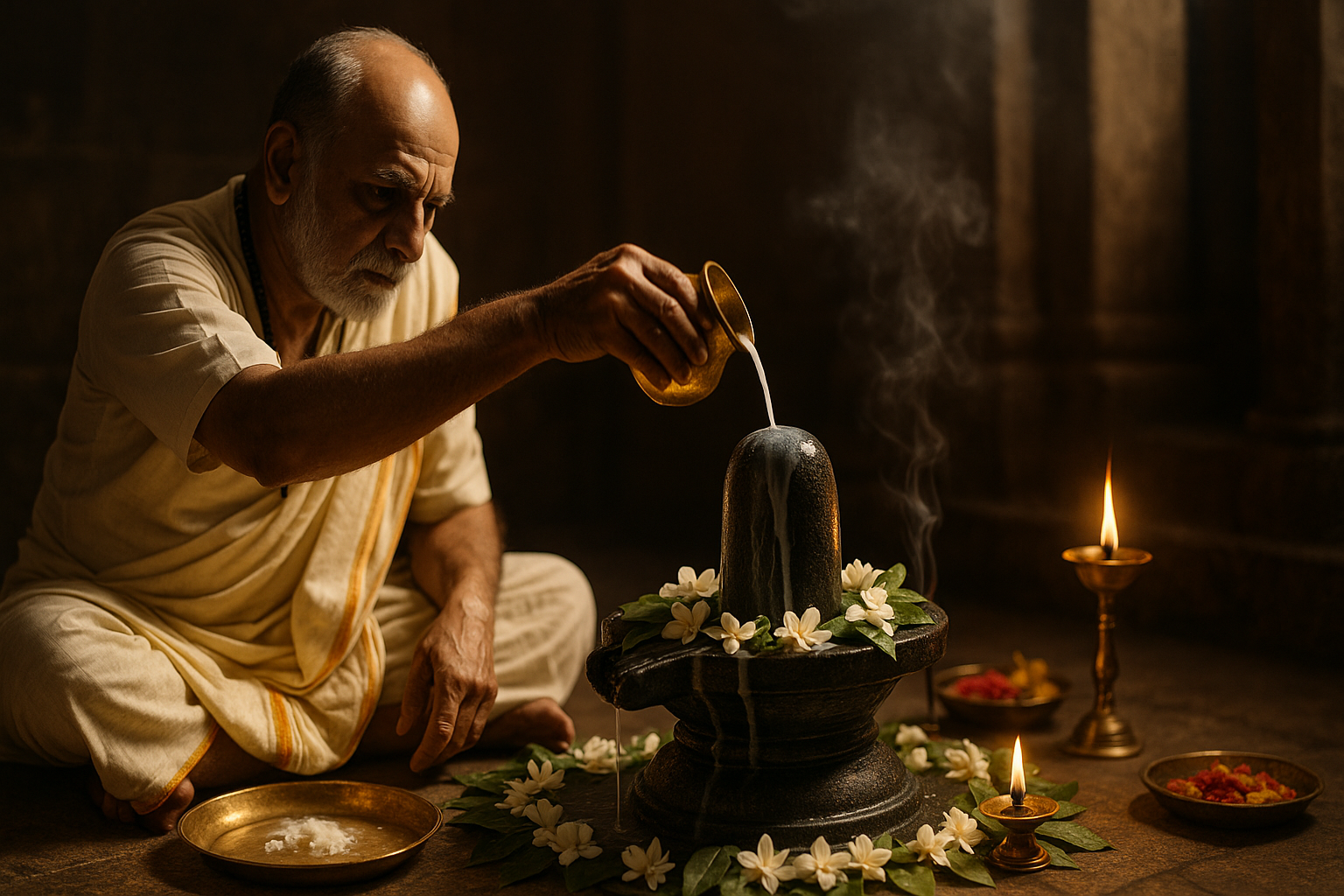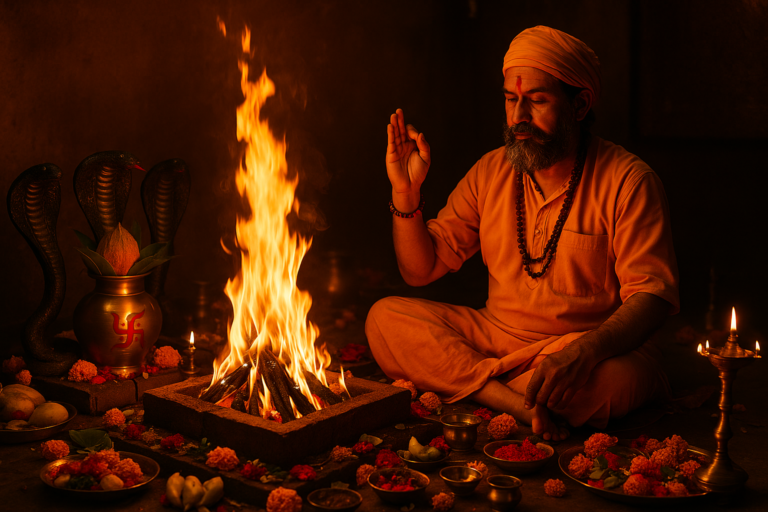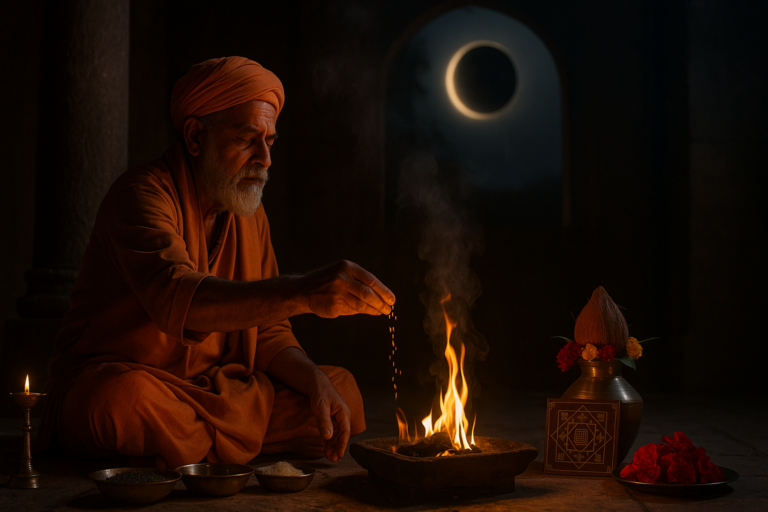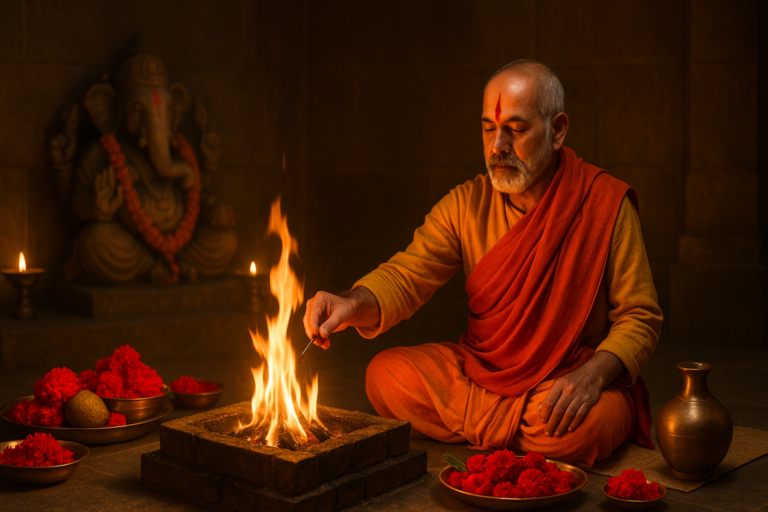Laghu Rudra Abhishek is a concise yet potent form of the Śrī Rudra Abhiṣheka—a purification and worship ritual dedicated to Lord Śiva. “Laghu” literally means “small” or “abridged,” so this ceremony packages the most essential elements of the full Rudra Abhishek into a shorter, more accessible ritual.
1. Purpose & Significance
- Pacify Malefic Influences: Addresses obstacles, chronic illnesses, legal or financial troubles, and mental unrest.
- Invoke Śiva’s Grace: Seeks Lord Śiva’s blessings for strength, protection, and spiritual upliftment.
- Karmic Cleansing: Helps burn away past karmic debts (pāpa) and fosters positive new beginnings.
2. Core Components
- Śiva-Linga or Śiva-Mūrti: The central icon, typically a small lingam of black stone or metal.
- Pancha-Dravya Abhiṣheka: Five principal liquids offered in sequence—
- Water (jalam)
- Milk (kṣīram)
- Curd (dadhi)
- Ghee (ghṛtam)
- Honey (madhu)
- Rudra Mantra Chanting: A selection of names from the Śrī Rudra Kāṣyapa–ṛṣya’s Rudram (often the 1st Anuvāka or first three Anuvākas).
- Bilva Leaves & Bel Patra: The sacred leaves of the wood-apple tree, dear to Śiva.
- Flowers & Fragrant Offerings: Typically white or light-colored (e.g. jasmine, lotus).
- Pradakṣiṇa & Aarti: Circumambulation and waving of a camphor or ghee lamp around the lingam.
3. Typical Procedure
- Purification: Devotee bathes and dons clean, preferably white or light-blue attire.
- Kalash Sthāpana: Invocation of sacred waters in a pot, placed near the Śiva-linga.
- Ācamana & Sankalpa: Small sip of water for internal purification, followed by a declaration of intent.
- Abhiṣheka Sequence:
- Water bath with mantra “ॐ नमो भवान्य शिवाय”
- Milk, curd, ghee, honey each offered with their corresponding Rudra-nāma recitations (number can vary from 11 to 27 names).
- Bilva Leaf Offerings: Three leaves per mantra, symbolizing Śiva’s trident.
- Flower Abhiṣeka: Showering petals while chanting.
- Aarti & Prasāda: Final lamp offering and distribution of blessed offerings (prasāda).
4. Duration & Mantra Count
- Time: Typically 1–2 hours, depending on the number of Rudra-nāmas chanted.
- Mantra Repetitions: Commonly 108, 216, or 1,008 names—Laghu versions often use 108 or 216.
5. When & Where to Perform
- Best Days: Mondays (Śiva-vāra), Śivarātri, or during the waning moon (Kṛṣṇa Pakṣa).
- Locations: Home shrine, Śiva temple, or sacred riverbanks—Ujjain’s Mahakaleshwar Jyotirlinga being especially powerful.
6. Benefits You Can Expect
- Removal of Obstacles: Smoother progress in career, education, or personal endeavors.
- Health & Longevity: Alleviation of chronic ailments, improved vitality.
- Mental Peace: Relief from anxiety, anger, and restlessness.
- Spiritual Growth: A deeper connection to Śiva, enhanced meditation and clarity.
